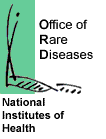FYI from the NHLBI Index
December 2002: Vol. 3, Issue 3
In the News
Framingham Heart Study Shows Improved Heart Failure Survival
According to data from the NHLBI's landmark Framingham Heart Study (FHS), the risk of dying of heart failure within ten years after being diagnosed with it dropped by about a third over the past half century. The report, which appeared in The New England Journal of Medicine, also shows that new cases of heart failure dropped by about a third for women during the same period. However, the number of new cases for men remained unchanged.
FHS Director Dr. Daniel Levy explained, "The reason that new cases are on the decrease for women but not men may have to do with a gender difference in the causes. Although high blood pressure and heart attack are important causes of heart failure in both men and women, high blood pressure is more prominent as a risk factor for heart failure in women, while heart attack plays a greater role in men.
"Treatment for high blood pressure has improved greatly over the past 50 years and has been shown to dramatically cut the number of new cases of heart failure. This may explain why fewer women are developing the disease," he continued. "Heart attack treatment and survival have improved since 1950 as well. But, many of those who now survive have a damaged heart, which makes them vulnerable to heart failure. A consequence of advances in the treatment of heart attack is a growing group of patients at risk for the occurrence of heart failure." Dr. Levy added that the availability of drugs and other treatments for heart failure may be a key reason survival has improved.
"These findings offer good news about a highly lethal disease," said Dr. Lenfant. "However, heart failure still affects far too many Americans and more than half of those who develop it die within 5 years of diagnosis. Prevention remains the best defense against heart failure. Americans can greatly reduce their chances of developing it by taking steps to prevent or control high blood pressure, heart disease, and other conditions that can lead to heart failure."
Heart failure occurs when the heart loses its ability to pump enough blood through the body. It often develops over many years. About 4.8 million Americans have heart failure, and about 550,000 new cases are diagnosed each year. Heart failure contributes to about 287,000 deaths a year.
News from Capitol Hill

The NIH will be funded under a series of continuing resolutions until Congress passes the Labor, Health and Human Services, Education, and Related Agencies (Labor/HHS/Education) Appropriations Act. The current continuing resolution, which expires January 11, 2003, allows the NHLBI to continue to operate at its fiscal year 2002 spending levels.
The Senate version of the Labor/HHS/Education appropriations bill is awaiting action by the full Senate. The accompanying report language (Sen. Rpt. 107-216) mentions several activities related to the mission of the NHLBI. For example, the committee urges the NHLBI to
- place highest priority on cardiovascular research
- expand cardiovascular disease research in women
- expand efforts to reduce the shortage of hematologists
- pursue research on whether cholesterol-lowering drugs and antihypertensive medications may protect against cognitive impairment and Alzheimer’s disease

|
On September 17, the House passed the Women’s Health Office Act of 2002 (H.R. 1784). It would create in statute the Office of Women’s Health (OWH) in the Department of Health and Human Services and also would establish women’s health offices in the Agency for Healthcare Research and Quality, Centers for Disease Control and Prevention, Food and Drug Administration (FDA), and Health Resources and Services Administration. |
| On October 4, Senator Edward Kennedy (D-MA) introduced the Research Revitalization Act of 2002 (S. 3060). It would require numerous changes to the system for protecting research participants, including the extension of protections to participants in research funded by private sources. | |
 |
|
| President Bush signed the Rare Diseases Act (H.R. 4013) into law as Public Law (P.L.) 107-280. The new law provides statutory authorization for the existing NIH Office of Rare Diseases and establishes Regional Centers of Excellence on Rare Diseases. He also signed into law the Rare Diseases Orphan Product Development Act (H.R. 4014) as P.L. 107-281, which authorizes $25 million to the FDA's existing Orphan Product Research Grant program. | |
Modified 12/13/02
[Back to Top]
[Table of Contents]
All Issues | FYI Index | NHLBI Express















 Twitter
Twitter
 Facebook
Facebook YouTube
YouTube